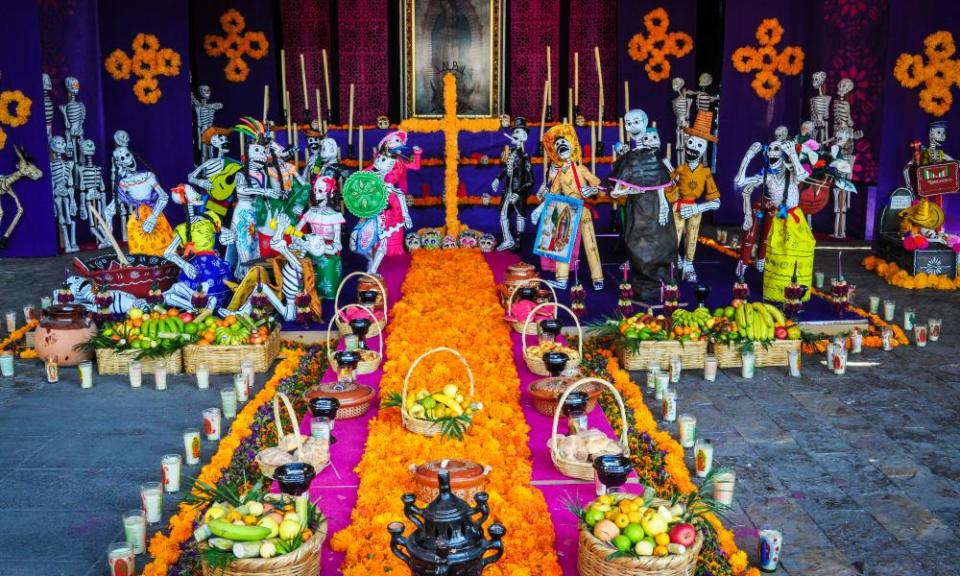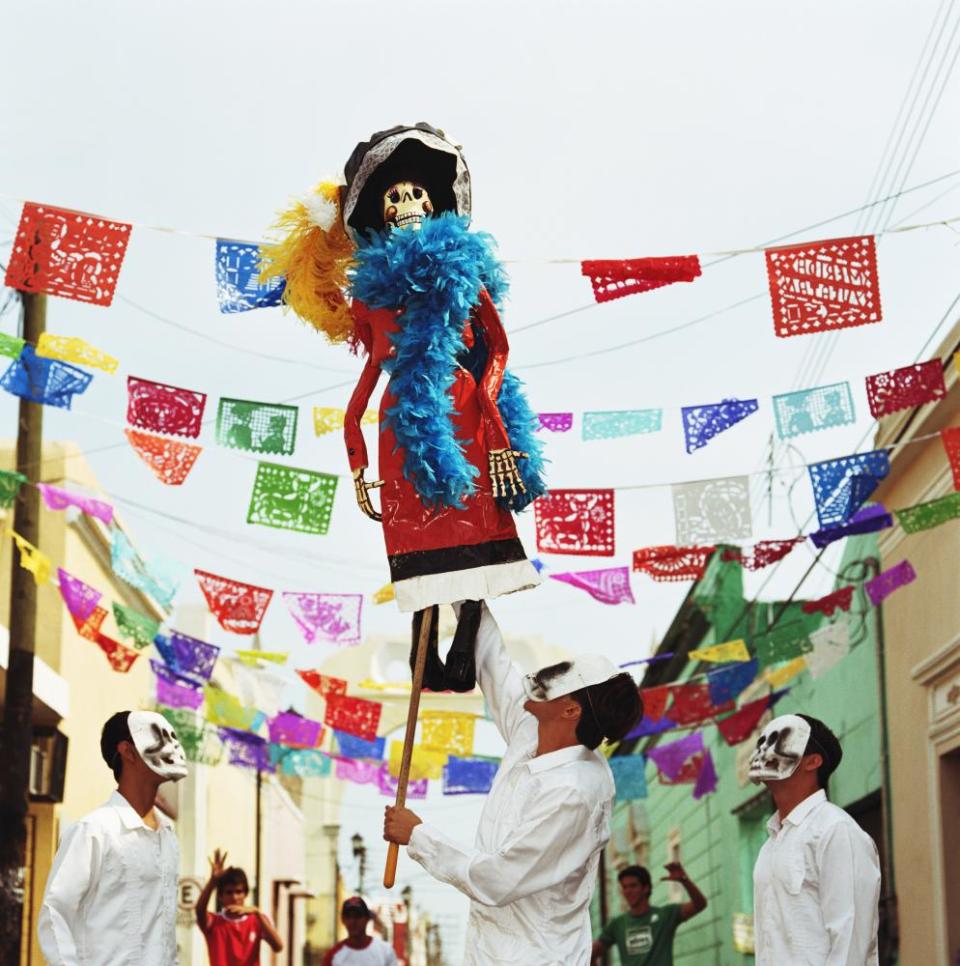‘It’s not Mexican Halloween’ – the lowdown on Day of the Dead

Day of the Dead is one of the most important celebrations in Mexico – and my favourite fiesta. Featuring beautiful floral displays, family get-togethers and celebratory feasts, it’s no surprise that the rest of the world is growing more and more curious about it.
Like many aspects of Mexican culture (see also: Cinco de Mayo), Day of the Dead has been somewhat lost in translation, with many in the west assuming it’s just “Mexican Halloween” (which I guess is kind of understandable, seeing as they’re very close in date and both have a focus on the afterlife).
Fundamentally, Day of the Dead is about believing that, for a precious few hours, our loved ones come back as spirits and we get to be with them one more time. Here’s everything you need to know …
Related: Celebrating Cinco de Mayo: six must-know facts about the Mexican fiesta
Day of the Dead actually lasts a few days …
Don’t be fooled by the name: Mexicans rarely have just one day of celebration for anything, and this fiesta for our loved ones who have passed is no exception.
Generally, when someone is speaking about the Day of the Dead, they are referring to 2 November, although the fiesta officially starts on 1 November – with the first day dedicated to the spirits of children and the second day dedicated to adults – and often involves weeks of planning and preparations.
It’s a very diverse celebration
Since Day of the Dead has its origins in the Indigenous cultures of what we now call Mexico, it has many variations. For example, in Yucatán, where I was born, we call it Hanal Pixán (food for the souls, in Mayan) and it lasts from 31 October to 2 November, with fixed days to celebrate the souls of children, adults, and even those lonely souls who have no one left on Earth.
The kinds of foods, flowers and offerings also change according to what is traditional in each state. In Yucatán, we adorn our altars with x’pujuk – a local variety of the Day of the Dead perennial cempasuchil (AKA Mexican marigold) – xtés (a beautiful red, velvet-looking flower), lots of citrus fruits, and jicama (Mexican turnip). We eat mucbipollo, a delicious dish of crispy masa stuffed with meat, which is wrapped in banana leaf and buried to cook.

I’m not Mexican – can I still celebrate?
If you find this celebration meaningful, I see no harm in non-Mexicans respectfully researching its origins and adopting some of the traditions and rituals.
Everyone who has suffered loss knows how comforting it is to remember those who are no longer with us.
How do I plan my own Day of the Dead celebration?
There are many traditional ways to celebrate Day of the Dead – from visiting a loved one’s grave to attending mass, feasting with family and friends to creating an altar in your home (place a picture of your loved one(s) in the centre, decorate it with flowers and their favourite foods and drinks, and lay a little path of flower petals and candles leading up to it, to guide their spirits).
In Mexico, there’s no party without food and drink – this is something we take very, very seriously. For Day of the Dead, your focus should be on the foods and drinks that your loved ones enjoyed while they were alive – however, if you want to add an authentic Mexican twist to proceedings, I can highly recommend the following:
Atole – a warm, comforting, corn-based drink laced with vanilla and cinnamon.
Pan de muerto or “bread of the dead” – it has hundreds of variations, but the most common one is a sweet bread made with orange rind and aniseed, covered in sugar.
Paloma – Mexico’s most popular cocktail. Translating as “dove”, it’s a blend of tequila (note: always opt for a 100% blue weber agave tequila such as el Jimador’s Tequila Blanco), freshly squeezed pink grapefruit juice, agave syrup and soda water, and is the perfect way to raise a toast to those who have passed.
Whatever you do, remember that Day of the Dead is not a sombre occasion: invite people over, eat, drink, be merry, and share happy, meaningful stories about the loved ones you all miss.
And what’s the deal with the beautiful skulls you see everywhere?
Well, she is known as Catrina, and her history is worth a whole other article. But, in short …
Created by the cartoonist José Guadalupe Posada (1852-1913) as a way to criticise the Mexican elite of his time, these fancy skulls originally had nothing to do with Day of the Dead, and instead were a statement about how “blonde, brown, rich or poor, everyone ends up a skull”.
Later, muralist Diego Rivera (1886-1957) gave her the name Catrina (meaning posh or well-dressed), and incorporated her into his paintings. Eventually, she found her way into every kind of Mexican craft and became an essential component of Day of the Dead festivities; today you can find Catrinas made of paper, clay, sugar and many other materials.
So, are Halloween and Day of the Dead actually similar?
Yes and no. Obviously, they happen around the same time of the year and are both related to death, rebirth and spirits. They also both have their origins in celebrations predating Christianity: Halloween has evolved from the Celtic festival Samhain, while Day of the Dead has its roots in multiple traditions and beliefs around death from different Mesoamerican cultures.
When Mesoamerica was colonised, and the part of it now known as Mexico became New Spain, some of the Indigenous traditions were adopted by the Spaniards – always passing through the lens of Christianity. Now, Day of the Dead is deeply tied to All Saints’ Day.
But while Halloween has now lost most of its religious and spiritual elements, Day of the Dead is still about communing with our ancestors through traditional rituals, food and drink.
Discover the vibrant taste of modern Mexico for yourself with el Jimador’s 100% blue weber agave tequila. Buy everything you need to start your authentic tequila journey here
Please enjoy 100% responsibly. el Jimador is a registered trademark. ©2022 Brown-Forman. All rights reserved.

 Yahoo Movies
Yahoo Movies 